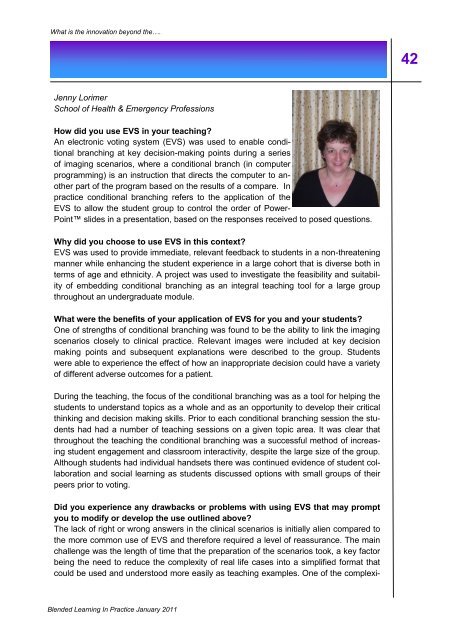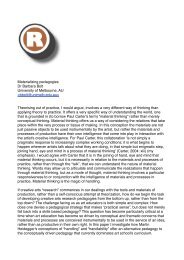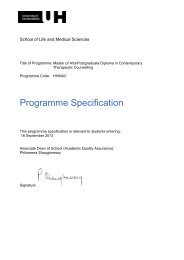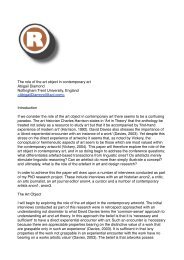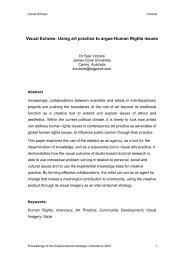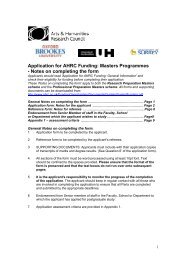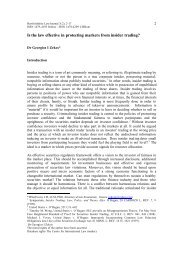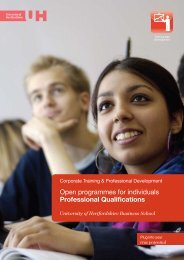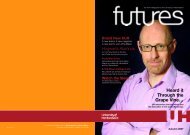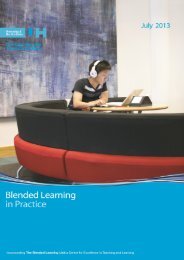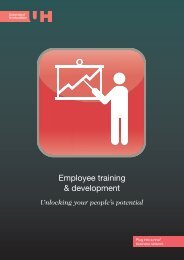3 - University of Hertfordshire
3 - University of Hertfordshire
3 - University of Hertfordshire
Create successful ePaper yourself
Turn your PDF publications into a flip-book with our unique Google optimized e-Paper software.
What is the innovation beyond the….42Jenny LorimerSchool <strong>of</strong> Health & Emergency Pr<strong>of</strong>essionsHow did you use EVS in your teaching?An electronic voting system (EVS) was used to enable conditionalbranching at key decision-making points during a series<strong>of</strong> imaging scenarios, where a conditional branch (in computerprogramming) is an instruction that directs the computer to anotherpart <strong>of</strong> the program based on the results <strong>of</strong> a compare. Inpractice conditional branching refers to the application <strong>of</strong> theEVS to allow the student group to control the order <strong>of</strong> Power-Point slides in a presentation, based on the responses received to posed questions.Why did you choose to use EVS in this context?EVS was used to provide immediate, relevant feedback to students in a non-threateningmanner while enhancing the student experience in a large cohort that is diverse both interms <strong>of</strong> age and ethnicity. A project was used to investigate the feasibility and suitability<strong>of</strong> embedding conditional branching as an integral teaching tool for a large groupthroughout an undergraduate module.What were the benefits <strong>of</strong> your application <strong>of</strong> EVS for you and your students?One <strong>of</strong> strengths <strong>of</strong> conditional branching was found to be the ability to link the imagingscenarios closely to clinical practice. Relevant images were included at key decisionmaking points and subsequent explanations were described to the group. Studentswere able to experience the effect <strong>of</strong> how an inappropriate decision could have a variety<strong>of</strong> different adverse outcomes for a patient.During the teaching, the focus <strong>of</strong> the conditional branching was as a tool for helping thestudents to understand topics as a whole and as an opportunity to develop their criticalthinking and decision making skills. Prior to each conditional branching session the studentshad had a number <strong>of</strong> teaching sessions on a given topic area. It was clear thatthroughout the teaching the conditional branching was a successful method <strong>of</strong> increasingstudent engagement and classroom interactivity, despite the large size <strong>of</strong> the group.Although students had individual handsets there was continued evidence <strong>of</strong> student collaborationand social learning as students discussed options with small groups <strong>of</strong> theirpeers prior to voting.Did you experience any drawbacks or problems with using EVS that may promptyou to modify or develop the use outlined above?The lack <strong>of</strong> right or wrong answers in the clinical scenarios is initially alien compared tothe more common use <strong>of</strong> EVS and therefore required a level <strong>of</strong> reassurance. The mainchallenge was the length <strong>of</strong> time that the preparation <strong>of</strong> the scenarios took, a key factorbeing the need to reduce the complexity <strong>of</strong> real life cases into a simplified format thatcould be used and understood more easily as teaching examples. One <strong>of</strong> the complexi-Blended Learning In Practice January 2011


